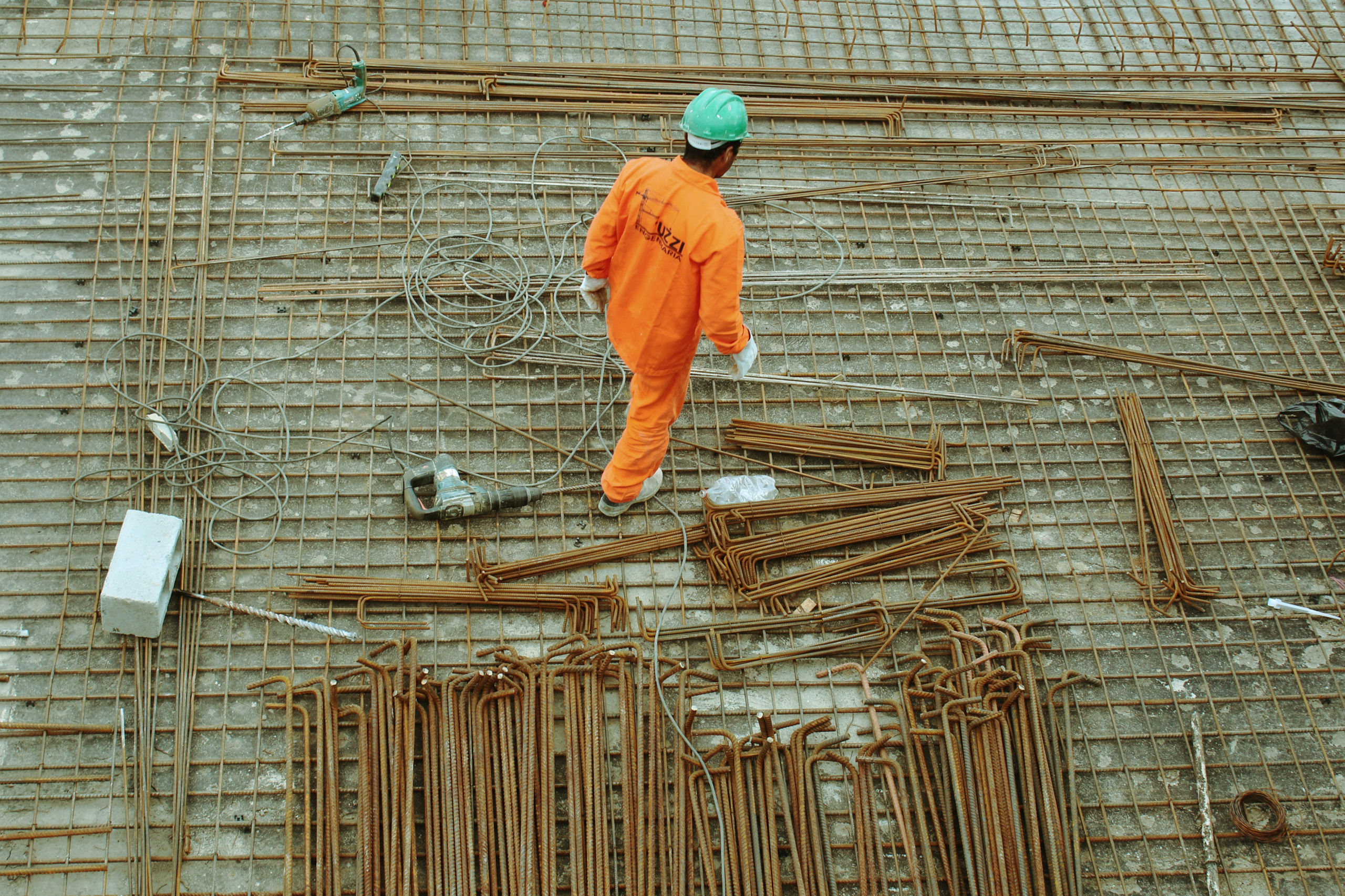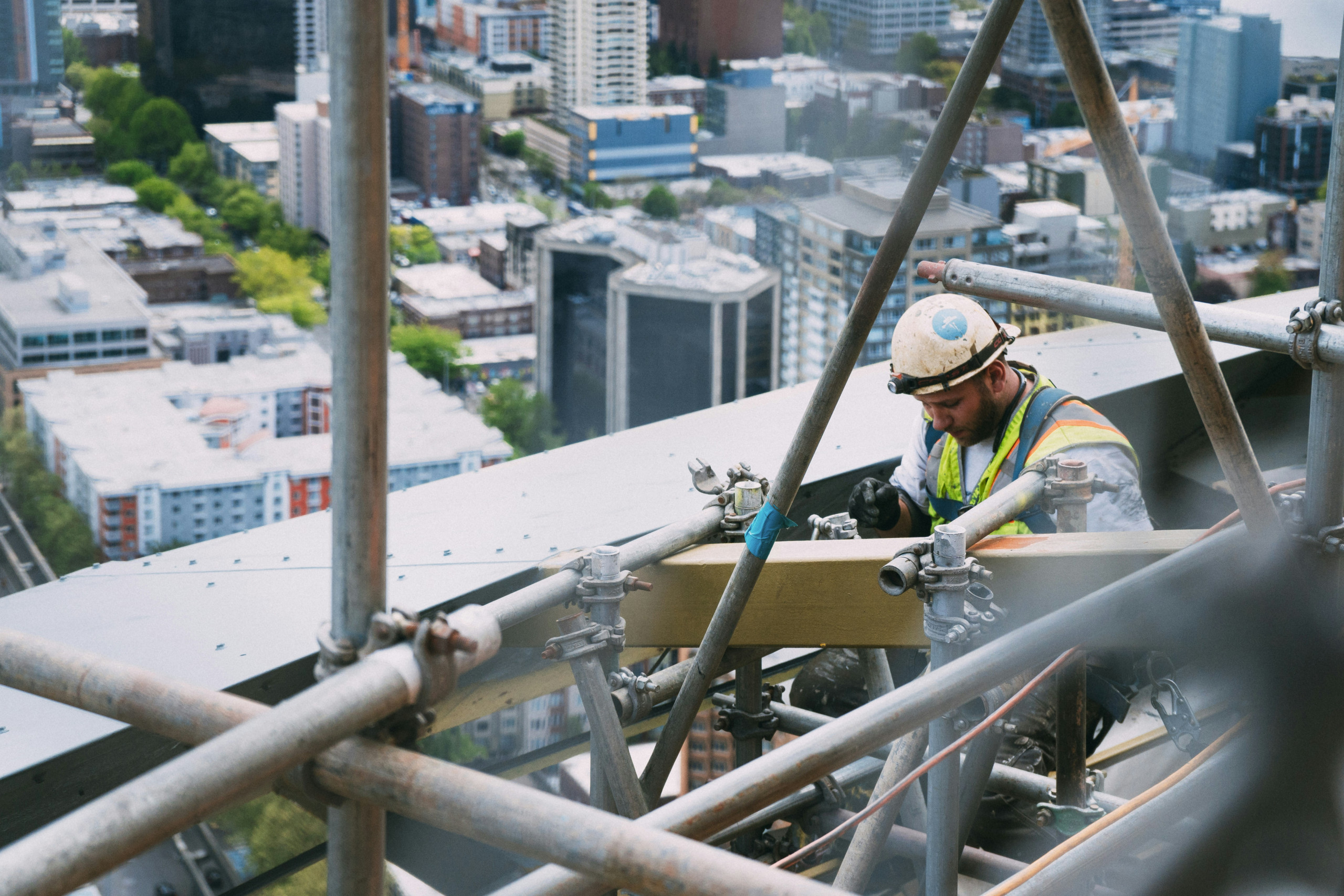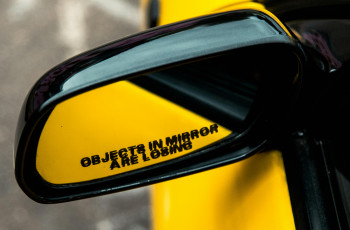In this article, we will take a close look at the durability and ruggedness of heavy-duty die grinder constructions. Whether you’re an experienced handyman or just starting out, finding tools that can withstand rigorous use is essential. We will explore the various aspects that contribute to the sturdiness of die grinders, from the materials used to their design and construction. By understanding the key factors that make a grinder durable, you can make an informed decision when purchasing your next heavy-duty tool. So, let’s dive right in and explore the world of robust die grinder constructions!
Overview of Heavy-duty Die Grinder Constructions
Die grinders are versatile power tools that are widely used in various industries such as metal fabrication, automotive repair, and construction. These tools are designed to provide high-speed rotary grinding, deburring, and polishing action, making them essential for tasks that require precision and finesse. In this comprehensive article, we will explore the importance of durability and ruggedness in heavy-duty die grinders and delve into the key components, materials used in construction, testing methods, and special features that enhance their durability. We will also discuss the maintenance and care required for these powerful tools and highlight their real-life applications.
What is a Die Grinder?
A die grinder is a handheld power tool that utilizes a rotating abrasive wheel for grinding, shaping, and polishing various surfaces. Unlike larger grinding machines, die grinders are compact and lightweight, making them ideal for precision work in tight spaces. These versatile tools are available in different sizes and configurations, with heavy-duty die grinders being specifically designed for demanding applications that require robust construction and long-lasting performance.

Understanding Heavy-duty Die Grinders
Heavy-duty die grinders are designed to withstand the rigors of continuous use in challenging environments. They are built with robust materials and components that ensure durability and ruggedness. These power tools are engineered to deliver high torque and power, allowing users to tackle tough applications with ease. Heavy-duty die grinders are commonly used by professionals in industries such as metal fabrication, automotive repair, and construction, where precision, power, and reliability are crucial.
Importance of Durability and Ruggedness in Construction
Durability and ruggedness are paramount qualities in heavy-duty die grinders due to the demanding nature of the applications they are used for. When working on a metal fabrication project, for example, the die grinder needs to withstand constant use on hard materials without losing its performance capabilities. Similarly, in the automotive and construction industries, where these tools are often used for extended periods, a durable and rugged die grinder ensures optimal performance and longevity. Investing in a high-quality, durable die grinder not only ensures efficiency but also guarantees safety and reduces downtime.

Key Components in Heavy-duty Die Grinders
Motor
The motor is the heart of a heavy-duty die grinder. It provides the necessary power and torque to drive the grinding wheel or accessory. In heavy-duty models, the motor is typically more robust and powerful compared to standard die grinders, allowing for more demanding applications. The motor should be designed to withstand high loads and prolonged use without overheating or losing performance.
Gear System
The gear system of a heavy-duty die grinder plays a vital role in transferring power from the motor to the grinding wheel or accessory. It should be designed to minimize power loss and deliver the maximum torque to the working surface. The gears should be made from high-quality materials such as hardened steel to ensure durability and optimal power transmission.
Bearings and Seals
Bearings and seals are crucial components that support the rotating shaft of the die grinder. They not only provide smooth rotation but also help to reduce friction, vibration, and noise. In heavy-duty models, the bearings and seals should be designed to withstand high loads and resist wear for long-lasting performance.
Housing and Grip
The housing and grip of a heavy-duty die grinder are responsible for providing a secure and comfortable hold during operation. The housing should be constructed from durable materials such as aluminum or reinforced plastics to protect the internal components from impacts and ensure longevity. The grip should be ergonomically designed to reduce fatigue and improve control during extended use.
Collet and Chuck System
The collet and chuck system of a die grinder secure the grinding wheel or accessory in place. In heavy-duty models, these components should be designed to provide a strong and reliable grip to prevent slippage or dislodging during operation. The collet and chuck system should be made from high-quality materials and engineered to withstand the high speed and vibrations generated during use.
Materials Used in Construction
Metal Alloys
Metal alloys such as aluminum, steel, and titanium are commonly used in the construction of heavy-duty die grinders. These materials offer excellent strength, durability, and resistance to wear and corrosion. Aluminum is often used for the housing and grip due to its lightweight nature, while steel and titanium are used for critical components such as gears and bearings to ensure maximum strength and longevity.
Carbon Fiber
Carbon fiber is a lightweight yet incredibly strong material that is commonly used in high-end heavy-duty die grinders. It offers superior strength-to-weight ratio, making the tool more durable without adding unnecessary weight. Carbon fiber is often used for the housing and grip of die grinders to provide ruggedness and durability while keeping the tool lightweight and easy to handle.
Reinforced Plastics
Reinforced plastics, such as fiberglass-reinforced nylon, are commonly used in heavy-duty die grinder construction. These materials offer excellent impact resistance, durability, and weight reduction compared to traditional metals. Reinforced plastics are often used for the housing and grip of die grinders, providing lightweight yet robust protection for the internal components.
Rubberized Coatings
Rubberized coatings are applied to certain parts of heavy-duty die grinders to enhance grip and reduce vibration and noise. These coatings provide a comfortable and secure hold, improving control and reducing operator fatigue during prolonged use. The rubberized coatings also help to protect the tool from impacts and provide a layer of insulation against dust and debris.

Impact of Durability on Performance
Reduced Vibration and Noise
A durable heavy-duty die grinder is designed to minimize vibration and noise during operation. This not only ensures a more comfortable working experience but also reduces the risk of hand-arm vibration syndrome (HAVS). By dampening vibrations, the die grinder allows for increased control and precision, resulting in better-quality work.
Optimized Power Transmission
Durability in heavy-duty die grinders directly impacts power transmission efficiency. With durable components and materials, the tool can effectively transfer the motor’s power to the grinding wheel or accessory, ensuring consistent and reliable performance. This optimal power transmission allows for efficient material removal and improved productivity.
Enhanced Control and Handling
A durable die grinder provides better control and handling, particularly in demanding applications. It allows the operator to maintain a steady grip and maneuver the tool with ease, reducing the risk of accidents or errors. Enhanced control and handling contribute to improved work quality, precision, and safety.
Maintenance and Longevity
Durability in heavy-duty die grinders significantly extends their lifespan and reduces maintenance requirements. With a durable construction, the tool can withstand the demands of continuous use and harsh working conditions without succumbing to wear and tear. This not only saves money on repairs or replacements but also ensures uninterrupted workflow and increased productivity.
Testing Methods for Durability and Ruggedness
Vibration Testing
Vibration testing is conducted to evaluate a die grinder’s ability to withstand vibrations generated during operation. The tool is subjected to different vibration frequencies and intensities to simulate real-world conditions. This test ensures that the die grinder’s components, such as gears and bearings, are robust enough to withstand vibrations without premature failure or performance degradation.
Drop and Impact Testing
Drop and impact testing assesses a heavy-duty die grinder’s resistance to accidental drops or impacts. The tool is dropped from various heights onto different surfaces to evaluate its ability to withstand sudden shocks. This test helps determine if the housing, grip, and critical components are durable enough to withstand rough handling or accidental drops without damage or performance loss.
Dust and Debris Resistance Testing
Dust and debris resistance testing evaluates a die grinder’s ability to withstand the ingress of particles during operation. The tool is subjected to various types of dust, debris, and contaminants to determine if its sealing and filtration systems are effective in preventing damage to internal components. This test ensures that the die grinder can operate reliably in dusty or dirty environments without compromising performance.
Continuous Operation Testing
Continuous operation testing involves running a heavy-duty die grinder continuously for an extended period under various load conditions. This test assesses the tool’s heat dissipation capabilities, motor performance, and overall durability. It ensures that the die grinder can withstand prolonged use without overheating or experiencing performance degradation.
Ergonomic Testing
Ergonomic testing evaluates a heavy-duty die grinder’s comfort, ease of use, and user-friendliness. The tool is assessed for its grip comfort, weight distribution, and handle design to ensure that it is ergonomically optimized for reduced operator fatigue and increased productivity. Ergonomic testing also considers factors such as switch accessibility and control layout to ensure intuitive and safe operation.
Comparison of Different Die Grinder Models
Industrial Heavy-duty Die Grinders
Industrial heavy-duty die grinders are specifically designed for heavy-duty applications in industrial settings. These models are characterized by their robust construction, high power output, and durability. Industrial die grinders are commonly used in metal fabrication, machining, and foundry operations, where precision and high material removal rates are essential.
Automotive Heavy-duty Die Grinders
Automotive heavy-duty die grinders are tailored for the unique requirements of the automotive industry. These models are designed to withstand the demanding tasks found in auto repairs, modifications, and restoration. They often feature ergonomic designs, compact sizes, and specialized attachments for working in tight spaces and intricate automotive components.
Construction Heavy-duty Die Grinders
Construction heavy-duty die grinders are engineered to tackle the challenges faced in the construction and renovation sectors. These models are built to withstand the rugged conditions and heavy use encountered on construction sites. They are often characterized by their robust construction, high torque output, and compatibility with abrasive grinding and cutting attachments.
Special Features for Enhanced Durability
Double Insulation
Double insulation is a special feature found in many heavy-duty die grinders. It involves the use of an inner insulating layer and an outer protective layer to provide an additional level of insulation and protection against electrical hazards. Double insulation increases the durability and safety of the tool, making it more resistant to damage caused by electrical faults or mishaps.
Thermal Overload Protection
Thermal overload protection is a safety feature that prevents a die grinder’s motor from overheating. It automatically shuts off the tool when temperatures reach a critical level, protecting the motor from damage. This feature not only extends the lifespan of the die grinder but also ensures safe and reliable operation even under heavy loads or prolonged use.
Dust and Debris Sealing
Some heavy-duty die grinders feature enhanced sealing systems that prevent the ingress of dust, debris, and contaminants. These sealing systems protect the internal components from damage, extending the lifespan of the tool and maintaining optimal performance. Dust and debris sealing is particularly important in industries such as construction and metal fabrication, where the working environment is often dusty or dirty.
Anti-Vibration Design
Anti-vibration design is a specialized feature in heavy-duty die grinders that reduces hand-arm vibrations during operation. It involves the use of vibration-damping materials, ergonomic grip designs, and precision-engineered components to minimize vibrations transmitted to the operator’s hand and arm. Anti-vibration design not only enhances operator comfort but also improves control, precision, and reduces the risk of hand-arm vibration syndrome.
Ergonomic Handle
An ergonomic handle is a key feature in heavy-duty die grinders that increases operator comfort and control. The handle is designed to reduce fatigue, minimize hand strain, and provide a secure grip during extended use. Ergonomic handles are often contoured, cushioned, or rubberized to improve grip and reduce vibrations, ensuring a comfortable and safe working experience.
Maintenance and Care for Heavy-duty Die Grinders
Regular Lubrication
Regular lubrication is essential for keeping heavy-duty die grinders in optimal working condition. The internal moving parts, such as gears and bearings, should be lubricated with appropriate oils or greases as recommended by the manufacturer. Lubrication reduces friction, prevents wear, and extends the lifespan of the tool. It is important to follow the manufacturer’s guidelines on lubrication intervals and product compatibility.
Cleaning and Debris Removal
Cleaning and debris removal are crucial maintenance tasks for heavy-duty die grinders. Dust, debris, and contaminants can accumulate over time and affect the tool’s performance. Cleaning the tool regularly, using compressed air or appropriate cleaning solutions, ensures proper functioning and prevents the risk of clogging or damage to critical components. It is essential to follow the manufacturer’s instructions for cleaning and avoid using abrasive materials that may scratch or damage the tool’s surfaces.
Proper Storage
Proper storage is essential for maintaining the performance and longevity of heavy-duty die grinders. The tool should be stored in a clean, dry, and well-ventilated area, away from extreme temperatures and humidity. It is recommended to use protective cases or bags to prevent dust, debris, and impacts during transportation or storage. Proper storage prevents premature wear or damage to the tool and ensures it is ready for use when needed.
Replacement of Worn-out Parts
Regular inspection of heavy-duty die grinders is necessary to identify any worn-out or damaged parts that may affect the tool’s performance or safety. If any components show signs of wear, such as cracks, excessive play, or diminished functionality, they should be promptly replaced with genuine replacement parts. Using damaged components can compromise the tool’s durability, safety, and overall performance.
Real-life Applications of Heavy-duty Die Grinder Constructions
Metal Fabrication and Welding
Heavy-duty die grinders are indispensable tools in the metal fabrication and welding industries. They are used for tasks such as grinding weld seams, removing burrs, and shaping metal surfaces. The durability and ruggedness of these tools ensure efficient material removal, precise shaping, and excellent surface finishes in metal fabrication projects.
Automotive Repair and Modification
Automotive professionals rely on heavy-duty die grinders for various tasks in vehicle repair and modification. These tools are used for grinding, polishing, and deburring automotive components such as engine parts, brake calipers, and exhaust systems. The durability and power of heavy-duty die grinders enable efficient and precise work, contributing to better performance and aesthetics in automotive repairs and modifications.
Construction and Renovation Projects
Heavy-duty die grinders find extensive use in construction and renovation projects. They are employed for tasks such as removing rust, grinding concrete, cutting tile, and shaping wood surfaces. The durability and ruggedness of these tools allow for continuous and heavy-duty use in demanding construction environments, ensuring efficient material removal and precise shaping for successful project completion.
Conclusion
Durability and ruggedness are essential in heavy-duty die grinders to ensure long-lasting performance and reliable operation in demanding applications. The key components, materials, testing methods, and special features discussed in this article highlight the factors that contribute to the durability of these power tools. By investing in a high-quality, durable heavy-duty die grinder, professionals in industries such as metal fabrication, automotive repair, and construction can expect reduced vibration and noise, optimized power transmission, enhanced control and handling, and overall longevity. Regular maintenance and proper care, along with the selection of the right die grinder model for specific applications, further guarantee their performance in real-life scenarios. With their durability and ruggedness, heavy-duty die grinders offer long-lasting performance for even the toughest applications.



